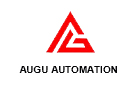Optimal Tire Replacement Strategies: Ensuring Safety and Performance
Many customers often opt to replace only one tire when changing them. Faced with recommendations from tire shops to replace two tires, they often perceive this as a deceptive tactic. Many people believe that replacing a tire with the same brand and tread pattern is sufficient. However, if the difference in wear between the new tire and the other old tire on the same axle is significant, replacing only one tire can lead to issues such as vehicle pulling due to variations in tire thickness and tread depth. Additionally, the greater traction of a new tire compared to an older one can result in uneven braking.
To replace just one tire, the following conditions must be met: 1) The new tire's tread depth should closely match that of the other tire on the same axle to avoid issues like vehicle pulling. 2) Tires on the same axle should have matching specifications, structure, manufacturer, and tread pattern (including load index and speed rating). If there is a significant difference in tread depth between the new tire and the old tire on the same axle, at least two tires on the same axle should be replaced to avoid issues such as uneven traction leading to vehicle pulling (in the case of front tires) or fishtailing (for rear tires). 3) When replacing only one tire, it is advisable to rotate the tires, placing the new tire preferably on a non-drive axle.
The benefits of replacing a pair of tires together are: 1) Replacing both tires simultaneously ensures uniform tread patterns, improving driving smoothness. Mechanics performing this replacement often balance the wheels, ensuring even force distribution among all four tires. 2) Simultaneous replacement aids in distributing weight evenly across the vehicle, enhancing safety during braking and turning, while also promoting fuel efficiency.
Tire shops should educate customers about when it's necessary to replace two tires, rather than assuming customers are uninformed and thereby potentially alienating them.
Key points for tire replacement:
Replace Immediately for Bulging or Cracking Tires: Tires showing signs of bulging or cracking due to internal belt failure and high internal pressure should be replaced promptly to avoid blowouts. If there are no signs of bulging but only minor cracks (less than 6cm), and the tire holds air without issues, it may continue to be used.
Replace Worn Tires Promptly: Extremely worn tires reduce friction, increasing the risk of hydroplaning on wet surfaces. Measure tire wear by observing tread depth; new tires typically start at around 8mm and should be replaced around 1.6mm.
Limit Tire Repairs: While tire repairs are economical and effective, excessive repairs increase the risk of future failure. Once a tire has been repaired twice, it's advisable to replace it.
These guidelines ensure vehicle safety and performance, helping customers make informed decisions about tire maintenance and replacement.














